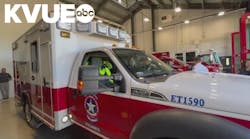It is a rudimentary concept in management that when workers believe they have value, and, indeed, when they believe that their management cares about them, their productivity will increase. Of course, firefighters are more identified as professionals rather than workers in the traditional sense of the word. But, they are part of a management system that is hierarchical, or one that is managed from the top to the bottom within a rank system. The line firefighters, those with nozzles or ladders in their hands, are at the bottom of that system, yet they are the largest influence and the most important element in actually fighting the fire.
These were the kinds of things I was thinking about in the kitchen of a Bronx firehouse one day in 1975 when I picked up a fire service magazine. I flipped through the pages, realizing with each page that there was nothing in the magazine that interested me, and yet there was no one in the world more interested in firefighting than I, and the men I worked with. So, I wondered, was it I who brought inadequate background to the content of the magazine, or did the magazine fail to present material adequate to my interests?
The answer contains a little bit of both. In those days, to be a chief officer in a fire department one needed to be as close to a hydraulics expert and building construction engineer as possible, and so the fire service magazines published articles geared to the technical, and written for those officers on the way up the ranks. I did not have the required technical background to take anything from those articles (I studied English literature in college). On the other hand, the magazine had not a single article geared to the line firefighter – the non-technical articles about safety, equipment innovation, profiles of firefighters doing commendable things, political opinion, big jobs in other cities and towns. Wasn’t it time to have a magazine for the rest of us who loved the job?
I have always been moved by the idea, to paraphrase Bobby Kennedy, that some people see things as they are and ask why, while others see things as they could be and ask why not? This is what drove me recently to create First Responders Financial, and what drove me more than 30 years ago, as I sat in my small office in the middle of the woods in Garrison, NY, to create Firehouse® Magazine. It had to be done. It was needed. And, if I did not do it, who would? Well, maybe somebody would have, but I know I felt a responsibility to do it.
At that time, Report from Engine Co. 82 had more than 2 million readers, and I had received thousands of letters from firefighters throughout the world. I sensed that I could rely on these friends to help me get something important off the ground, and so I set myself to work. I called a few pals who were working in the advertising industry and asked them to send me the advertising kits (now called media kits) for every magazine they could find, including any in the emergency field. I studied the published data of those magazines – the subscription rates, the per-page advertising fees, the number of subscribers, the demographic distribution throughout the country, the number of management, sales and editorial staff – everything about publishing except the editorial content. I knew what the magazine’s editorial content should be, and it was the one area of publishing where I did not need instruction. Also, I believed in the importance of what I was doing – belief being the most consequential element in anything worth doing.
And, then, knowing the cost of paper, printing and postage, I added up the costs of renting space, staffing, assigning articles, travel and so on. The costs involved in starting a magazine were much greater than any I had anticipated – more than anything I had ever been involved in. And, so, I wrote a few pages about the need and importance of a new magazine for the fire service and hand carried a proposal to a friend – a man named Bob Russell, who was a Wall Street executive. Bob read it as I sat across from him, set it down and said, “It’s about time the firefighters had a magazine for themselves – we just have to do this.†Bob gave me a substantial check and became the first investor in the magazine. This is called “success-influenced-by-luck,†for without Bob’s being there for me and for Firehouse® I don’t know what I would have done next. He also introduced me to a man named Bartle Bull, who had recently tendered his resignation as the president of The Village Voice, and Bartle came on board as publisher.
I was a director at that time (and still an advisor) of the now Boys and Girls Clubs of America. Jim Kemper of Kemper Insurance was also a director, and he loved the idea of the magazine. And, he became the leading investor. Bartle then brought a friend of his, Jock Whitney, into the group of investors, and with respected leaders like Kemper and Whitney the raising of the rest of the capital to create the magazine was, as we say in the firehouse, a cup of tea.
It is an understatement to say that the magazine lost money for the first few years. It was more like our budget capital was part of the water at Niagara Falls. There were a few times when we thought that we might have to fold the tent, which quite frankly would have killed a great dream. But, Bruce Bowling, whom we had brought on as our advertising director (and future publisher), always came through with just one or two more ads to make the rent.
And, then, worthy of a Harvard Business School dissertation, the magazine suddenly and without discernible reason showed a positive cash flow – which simply means that there was more money coming in than going out. I believe that something magical happened, that folks began talking about the magazine in the firehouses and that, sometimes called viral connection, word about the magazine began to spread from firehouse to firehouse, and our subscription base increased substantially – an event that not only brought in more subscription revenue, but also enabled us to reevaluate the low cost of our advertising rate.
I had found Hal Bruno, then political news director of Newsweek magazine, at a fire in the Bronx and convinced him to write a column about the influence firefighters could have in Washington, and I found other writers like Vinny Dunn, Alan Brunacini, John Norman and Paul Hashagen whom I gave an opportunity to publish within our pages. I met with Congressman Curt Weldon and helped to publicize his effort to create the Congressional Fire Service Caucus, which became the largest caucus in Congress. With each edition the magazine was becoming more tuned into the fire service. And, more important.
It was around this time that I asked Harvey Eisner to contribute a few things to the magazine. I had known him from the streets of the South Bronx where he was one of a cadre of fire photographers who followed us from fire to fire. He was also a firefighter from a small department in New Jersey, and I saw him as a serious person who cared deeply for firefighters and the fire service. Even then, much before Harvey became the chief of his department, I saw he would be able to provide the editorial leadership that Firehouse® would need in the future.
The magazine became a staple in the fire service. I was asked as its editor-in-chief to testify before Congress, to go to lunch and dinner at the White House, to speak at conventions. My dear departed friend Jim Page came to New York to seek my advice about starting a magazine in the emergency medicine field, and magazines for firefighters suddenly appeared in Germany, the Netherlands and Great Britain. New firefighting audiences were being identified, and voices were being created to reach them. Firehouse® was becoming the role model of emergency magazines.
The bottom line to all of this business history, of course, is that Firehouse® endures. After three decades, it continues to provide needed and helpful information. I will never forget the letter a firefighter wrote informing me that an article about cold-water drowning he had just read in Firehouse® enabled him to save the life of a child who had fallen through the ice, and was under the freezing water for 30 minutes – a good article, an informed firefighter, a saved life.
No enterprise in America, no matter how commendable and deserving, can succeed without a profit. We read newspaper stories, of course, about businesses that believe there cannot be too much profit, and in my mind those businesses always ultimately fail. The business that succeeds is the business that has a sound mission, keeps to it and continually reinvests in it. It is in the reinvestment that customers, in this case the readers, will see they are cared about, and cared for.
For me, all of life should be lived in an even balance between caring for others and caring for our families. It is what firefighters do – without a doubt. I believe it is that caring that made Firehouse® Magazine grow as an important influence in the crucial business of saving lives in the United States. And, Firehouse® could never have gotten off the ground and carried through for 30 years without the many dozens of men and women who made the magazine what it is. And, what is it? It is simply a shared vision of the magazine’s mission: to inform all firefighters – chiefs, officers, line firefighters, commissioners, career, volunteer, and on-call – as comprehensively as possible about the most important job, the greatest job, that was ever created.
Dennis Smith, the founding editor of Firehouse® Magazine, can be found at www.firstresponders.com.





